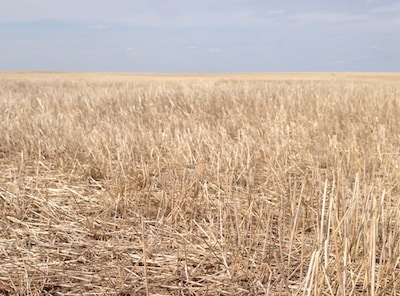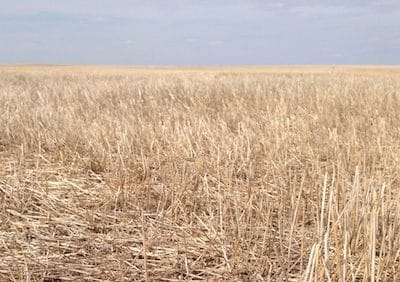
An important factor in canola stand establishment next spring is the crop residue situation this fall. An even mat of cereal residue is preferable to clumpy distribution that can affect drill performance, seed survival and overall crop uniformity next year. Fall is the best time to make sure residue is spread evenly. A properly adjusted combine straw chopper and spreader is key, and may eliminate the need for harrowing or stubble burning.
While combining cereals, take a look at the spread pattern. Does it cover the full width of the combine header? Adjust straw chopper spreader vanes as needed. Make sure straw chopper knives are sharp. This will create smaller pieces that spread better and don’t clump as much. Note that sharp knives and good spread pattern are BOTH essential. The worst situation is if the chopper works well but the spread pattern is uneven. That’s because a heavy harrow has a hard time moving chaff or really fine straw.
Straw cut height is another consideration. Cutting a little higher means less residue on the soil surface. It can also speed up the harvest process if it means putting less material through the combine.
If harrowing to fix poor distribution from the combine, note that aggressive harrowing can often rip out standing stubble, which is actually the best kind of crop residue. Standing stubble holds the snow, prevents soil erosion and is off the soil surface and out of the way for drill openers. Chopping down all the standing stubble just adds to the mat of residue on the soil surface.
Real Agriculture has a video called “Managing Residue Key to No-Till Wheat Planting,” with tips that can benefit canola seeding next spring.
Send us a “follow up” if you have further suggestions for how to set combines for improved residue management.

